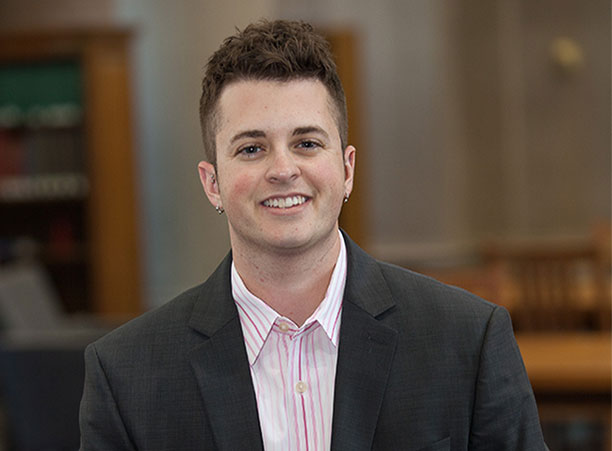 K.J. Rawson, assistant professor of English at the College of the Holy Cross, explores the term “transgender” in a recent piece for The Conversation. He writes about the difficulties of using the term based on its infancy and the fact that gender is seen differently in many cultures. This presents a significant challenge for historical work in this area. Rawson knows this first-hand as he in the process of building a Digital Transgender Archive (DTA) to help compile the long and complicated history of humans who have transgender roles. The project is transnational and uses more than a dozen archives to improve access to transgender history. The DTA treats transgender as a practice rather than an identity label. This will help address the challenge of using the category of transgender to cohere materials without losing sight of their historical and cultural contexts.
K.J. Rawson, assistant professor of English at the College of the Holy Cross, explores the term “transgender” in a recent piece for The Conversation. He writes about the difficulties of using the term based on its infancy and the fact that gender is seen differently in many cultures. This presents a significant challenge for historical work in this area. Rawson knows this first-hand as he in the process of building a Digital Transgender Archive (DTA) to help compile the long and complicated history of humans who have transgender roles. The project is transnational and uses more than a dozen archives to improve access to transgender history. The DTA treats transgender as a practice rather than an identity label. This will help address the challenge of using the category of transgender to cohere materials without losing sight of their historical and cultural contexts.
Rawson explains that it was thought that the term established in 1969 by transgender-identified author Virginia Prince. She used the term transgenderal to distinguish herself from transsexuals, or those who physically wanted to alter their anatomy through hormones and surgery. Rawson’s research along with Cristan Williams found that psychiatrist John F. Olivan used the term transgenderism in the medical text of the book titled “Sexual Hygiene and Pathology”( J B Lippincott Co,US: 1965). The current definition of transgender generally refers to a broad category encompassing many gender identities and expressions, including transsexual, genderqueer, and cross-dresser, among many others.
The term transgender now represents an opportunity for researchers to revisit historical figures, events and movements that may now be included under its umbrella. There are many challenges that the new terminology inflicts as at times it can include individuals who wouldn’t want to be described by it. By labeling someone as transgender you may minimize the unique identities and experiences of people in different historical moments and culture contexts.
Rawson asks the question “How can we classify someone as transgender when the term did not exist during that point in history.”
“Our hope is that, for the first time, anyone interested in trans-related history will have quick and easy digital access to a wealth of sources and materials” says Rawson.
Read the full article here.
This “Holy Cross in the News” item by Kelly Ethier
“What’s in a Word? The challenges of ‘transgender’”
The Conversation
Read Time
1 Minute